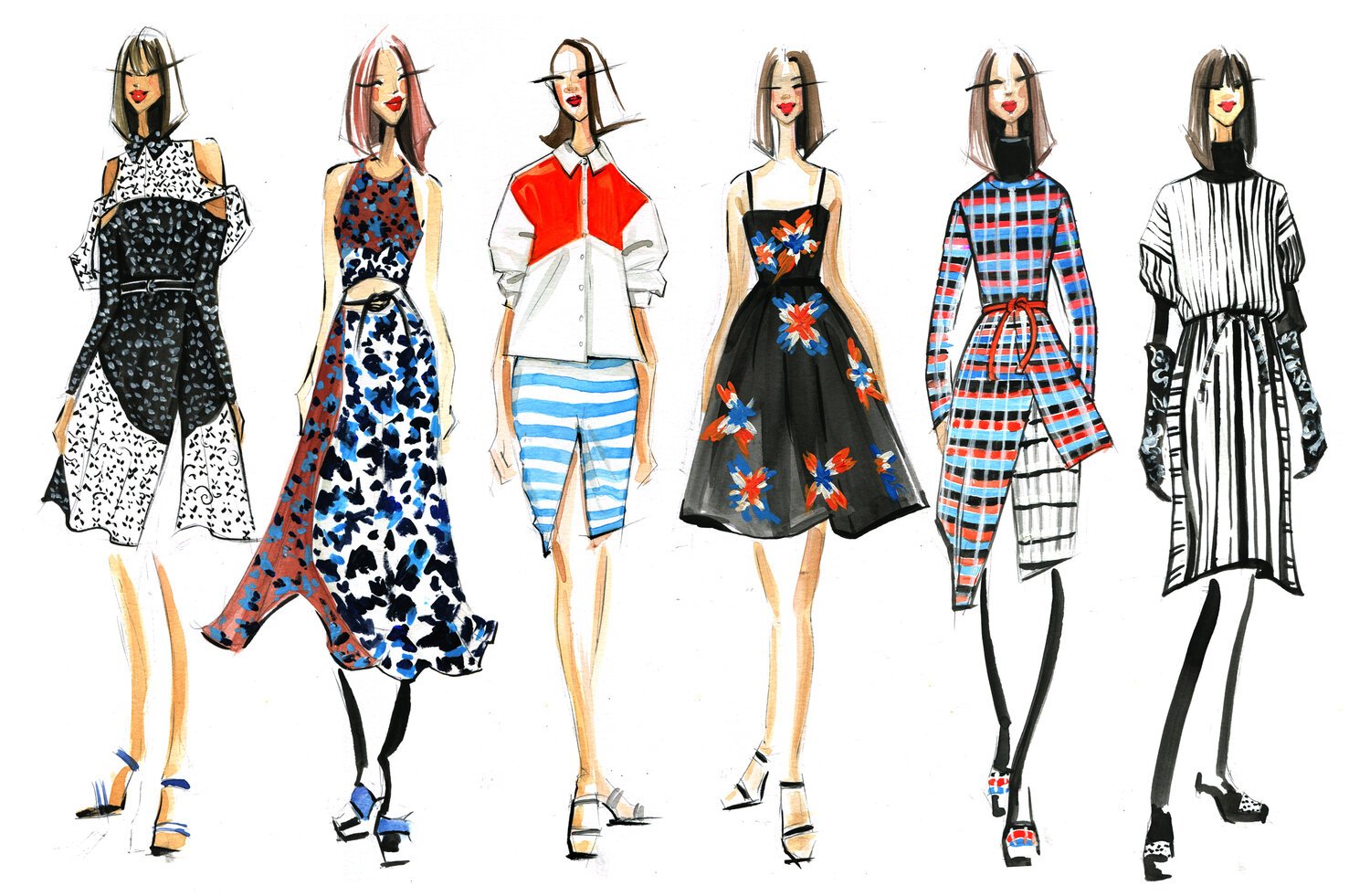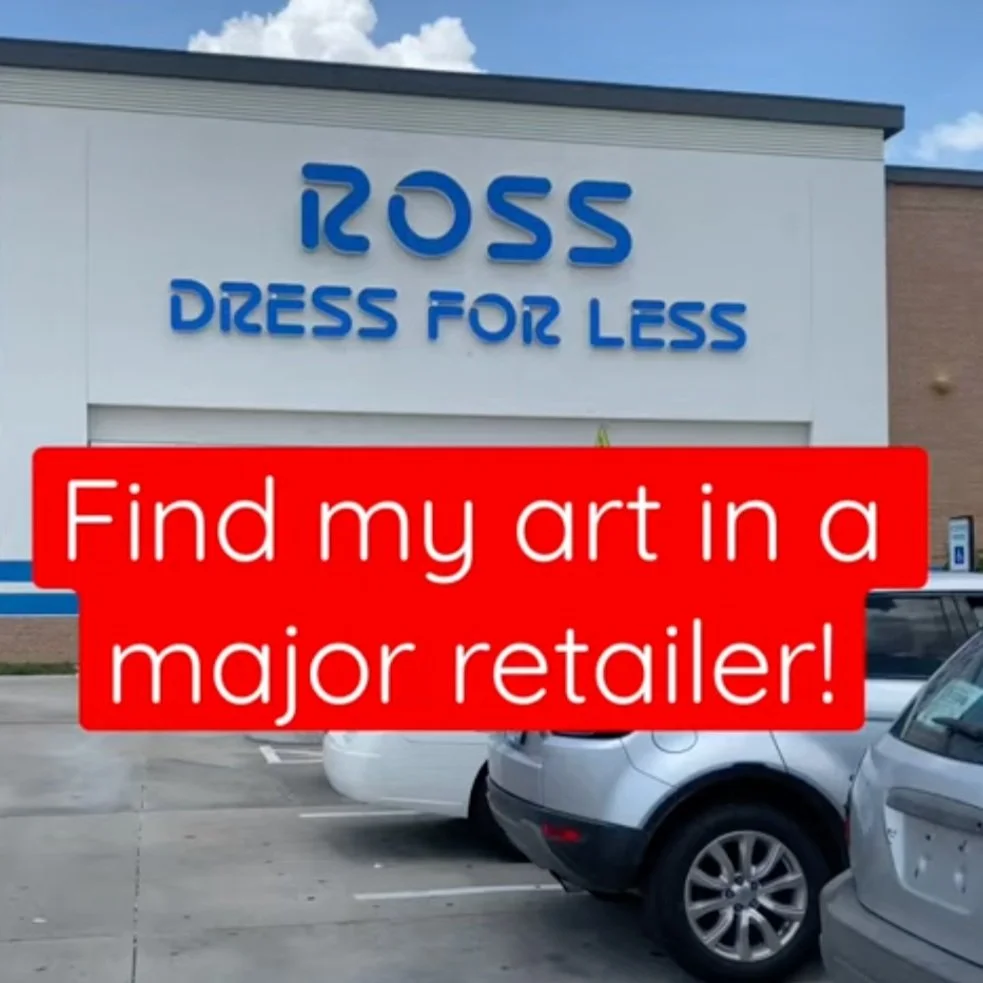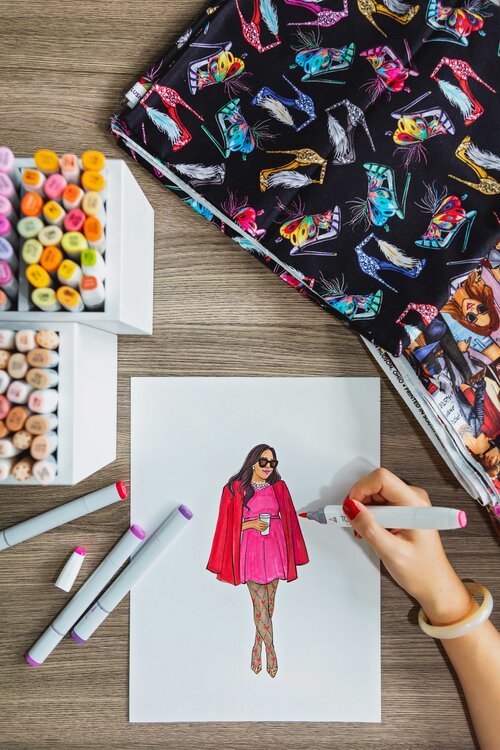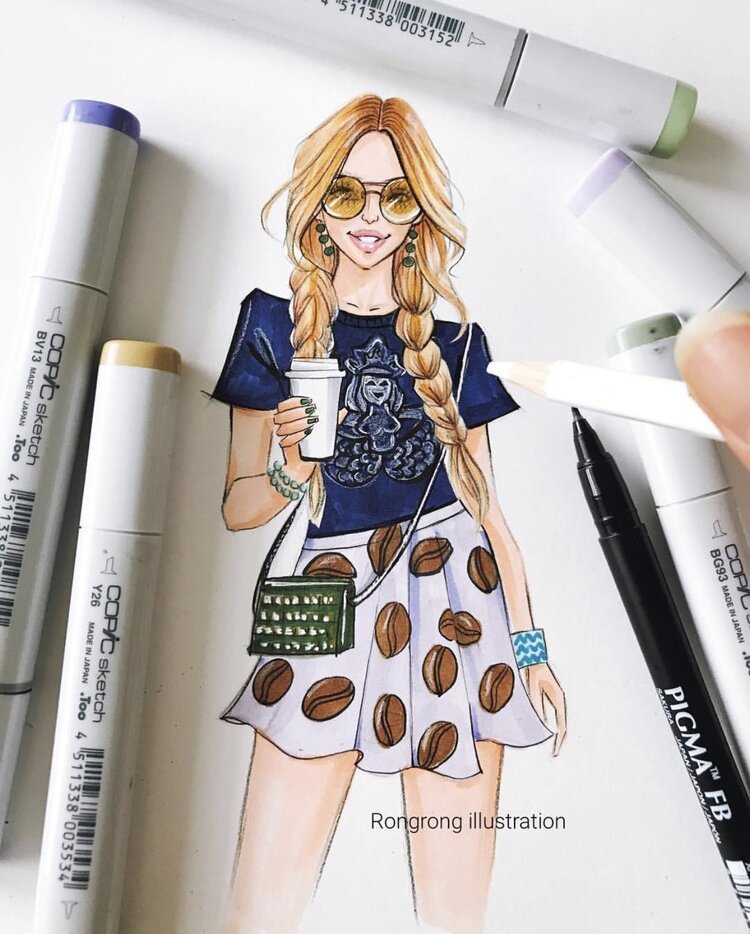The world of fashion illustration is a rewarding one. I have had the privilege to work in this special industry for many years and am currently based in Texas but collaborate with clients across the world, including New York, Los Angeles, London, Paris, and other hot cities! You can check out my blog, 8 Years In Business And 5 Tips I Have Learned From It to learn more about my experience.
One thing I love about being a fashion illustrator is how every day is different from the next and presents new opportunities and challenges. I wrote this blog to share all the fundamentals of fashion illustration and how to join the fun!
What Is a Fashion Illustrator and What Do They Do?
First things first: what exactly is a fashion illustrator!?
They are many things, to be honest, but at their essence, they are an artist who takes a fashion designer's vision to life through drawings.
Fashion illustrators work closely with their clients to make their dreams a reality. Fashion encompasses many aspects, including traditional fashion pieces such as dresses, sweaters, jeans, and t-shirts. But there is more to it! A fashion illustrator will also be drafting and helping to create socks, accessories, hats, and bags. They are involved in the innovative and varied fashion trends of each season and deliver them through a big range of art mediums including sketching, digital art, and even watercolour paint.
A fashion illustrator is someone who loves to work with people, has a knack for drawing and expressing themselves creatively and loves clothing. When a designer wants to finalize their concept, they would work directly with a fashion illustrator who would then draw and design the concept before any prototypes of the pieces are made.
As I mentioned, it is challenging to accurately describe the day in the life of a fashion illustrator, because each day is simply different. Depending on your personal goals and skills, you may wish to focus your work on editorial illustration, fashion, beauty packaging, live sketching, and selling work.
Your workplace will also vary! Depending on their goals, fashion illustrators can work for themselves, or be employed in a fashion house, boutique, magazine, or design studio.
What Are the Skills Required to Become a Fashion Illustrator?
There are several critical skills required to become a fashion illustrator.
Firstly, you do not need to have a formal degree to become a fashion illustrator. If this is the route you want to take, all power to you! There are many courses you can take from art history to create art to graphic design. You can pursue an associate, bachelor's or even a master’s degree—they’ll all do! If you choose to get a degree, you get to enjoy a hands-on approach to honing your ability to draw the human body and experiment with a variety of art mediums.
If you don’t wish to take a degree, that is perfectly fine. You should, however, hone your skills through a range of mediums including watercolour, pen and ink, pastels, charcoal, and acrylic paint and illustrating software such as Adobe Illustrator, InDesign, and 3-D. You can do this by yourself, taking creative courses or learning from other artists!
Talking about art and practice–of course, you can continue to perfect your skills (and you should throughout your career)–one thing you cannot fake is your artistic ability. Your artistic abilities are the essence of the job and there is nothing to hide behind. You need to have a raw talent for drawing by hand and/or by computer. This needs to translate to your deep understanding of colour, texture, lines, shading and style. You will need to be able to illustrate figures, poses, faces, clothing, and accessories realistically and accurately.
Another important skill is the ability to understand how to accurately portray a creative brief so that the work you deliver meets your client's expectations and needs. If you are not familiar, a creative brief is a short blueprint of the project which includes the client's wants, vision, and ideas with guidelines to follow, including the intended audience and goals.
You must have a strong sense of time management and be able to consistently meet all deadlines and work well under pressure. You will also benefit from a strong marketing strategy and the ability to network yourself effectively. Networking and putting yourself out there can be nerve-wracking at first, but you will need to, to acquire potential clients–including magazine publishers, advertising agencies, fashion designers and more! You’ll have to have a savvy eye for business matters, especially if you wish to be self-employed.
An extremely important aspect is having an impressive portfolio. Don’t overlook this step! Whatever relevant work you complete can be used as an exhibition of your work that you can share to showcase your top pieces for acquiring new contracts and clients.
Lastly, always believe in yourself and never stop having fun!
How to Develop Your Style as a Fashion Illustrator
Finding your style is important, as you need a niche to stand out! Your artistic style and ability are unique to yourself and yourself only.
Here are my top tips for finding your style:
Never stop creating! Use different mediums, canvases, and elements to create and create as often as you possibly can.
Get inspired. Gather images and work by some of your favourite artists and fashion illustrators to admire and be inspired regularly by their accomplishments.
Create exactly what you love. Don’t worry about what you “should” be doing and just experiment with creating pieces you truly love!
Find inspiration from varied environments. Step outside your comfort zone and head out into nature, museums, buildings and more to watch the world go by and notice what inspires you.
Hone your craft. A curious artist is a talented artist! Never stop being open to learning and improving.
Lean on a mentor. Reach out to others in the industry to learn from them and hone your craft.
Enjoy the happy mistakes.
The Different Career Paths Available to Fashion Illustrators
There are multiple different paths you can select as a fashion illustrator–or be like me and mix a little bit of all into one very rewarding career!
Some career paths include:
Editorial Illustration
Editorial illustration is what is used in fashion houses, digital companies, and magazines. This route is not completely all about fashion. Many makeup artists, interior designers and art companies/galleries like to use illustrators. Depending on who you’re working with, the illustrations can be used for marketing, advertising, or content.
Fashion and Beauty Packaging
One of my favourite jobs has to be fashion and beauty packaging. There is nothing more exhilarating than walking into a storefront and seeing your work on display! As a fashion and beauty packaging illustrator, you learn everything about the product, and its customers, and support its growth and marketability by creating desirable material and packaging. Here you work on every step, from the design, colour scheme and text based on the client’s creative brief.
Live Sketching
If you wish to incorporate your skill and travel, live sketching gigs may be what you excel in. Live sketch artists attend weddings, birthday parties, launches, or any celebration! Your role is to showcase the mood of the event through your unique artwork. As a live sketch artist, you may be required to draw guests, a ceremony, clothing, or even the landscape/ backdrop.
Market Your Work
Many fashion illustrators sell their fabulous artwork online and/or in person at markets or shops. Your work can be put onto whatever canvas you wish including prints, stickers, cards, portraits, towels, mugs and more!
Where to Find Work as a Fashion Illustrator
Fashion illustrators can find work in a wide range of places. Some companies do hire in-house fashion illustrator artists, as do various event planners. However, a large majority of fashion illustrators do work for themselves as freelancers.
Being a freelancer has its perks as you are essentially your own boss! This means you can make your hours, set your rates, and work from wherever. It also, however, means you must be very self-motivated and will have to deal with the ins and outs of business ownership such as taxes and bookkeeping. It’s not impossible, but it’s important to be aware freelancing does come with its challenges.
Tons of businesses and individuals hire freelance fashion illustrators, including:
Fashion designers
Home sewing pattern developers/companies
Magazines
Authors
Art directors
Event planners
Publicists
To discover freelance fashion illustrator jobs, you will require an impressive portfolio of your work, to demonstrate to potential employers your skills and personal style. It doesn’t hurt to obtain reviews from people you worked with for an accurate portrayal of what you are like to work with.
Marketing is critical for finding freelance fashion illustration jobs. I can’t lie to you, the fashion illustration industry is competitive, so you and your work must stand out. Create and build your brand and showcase your work to get your name out there!
Next up is networking. You can do this by attending fashion events to meet designers, magazine editors, publicists, and other professionals in the industry. You should aim to attend fashion shows, and new boutique openings and go watch people doing speeches or talks. These are great opportunities to get your name out there and meet new people that are involved in the industry. Stand out through conversation, ask questions, and strive to forget genuine relationships. Don’t forget to bring your business cards!
If you don’t fancy the freelance life, you can get in touch with jobs by searching online, contacting companies/designers you would like to work with or attempting to get an agent! When you apply for various roles, you will want to include your portfolio and a little about yourself. If you wish to obtain an agent, be sure you find someone who gets you and your goals.
Tips for Building a Successful Freelance Career in Fashion Illustration
Lucky for you, I do have a few tips that I will share in this blog.
If you wish to learn more from me, check out my exclusive Fashion Illustrator Course, which grants you a lifetime access to some incredible first-hand knowledge from me! You learn how to draw fashion illustrations, elevate your career, and make money through your art. The course includes 7 video tutorials, PDF templates and resources to never stop learning!
Tip 1: Harness the power of social media
If you are not on social media yet, I have one question: why!? Social media is an incredible marketing tool that connects you to people around the entire world. For free! There are many social platforms and while I encourage you to master one at first, eventually you should be on all of them: from Twitter to TikTok to Instagram and Pinterest. The trick about social media is to post regularly and interact with your fans!
Tip 2: Create a structured schedule
Make a schedule that motivates you and that you can hold yourself accountable for. This means setting up your week in advance and scheduling time for exercise, walks, self-care, and continued mastery of your art. Always block out time for lunch and breaks and try to step away from work at a very reasonable hour every day!
Tip 3: Avoid comparison
One of my all-time favourite quotes is: “comparison is the thief of joy” from Theodore Roosevelt. When you are starting on this career path, I advise you to stay in your lane and enjoy the process. There is only one you and only you can offer what you do! Focus on your work, believe in yourself, and strive to always grow and achieve your goals!
Never Give Up
Equal parts rewarding and challenging, being a fashion illustrator is the best job in the world. Okay, maybe I am a little biassed, but I truly love my job and wish anyone joining the ranks, great success. I hope this blog inspires you to get started today!









